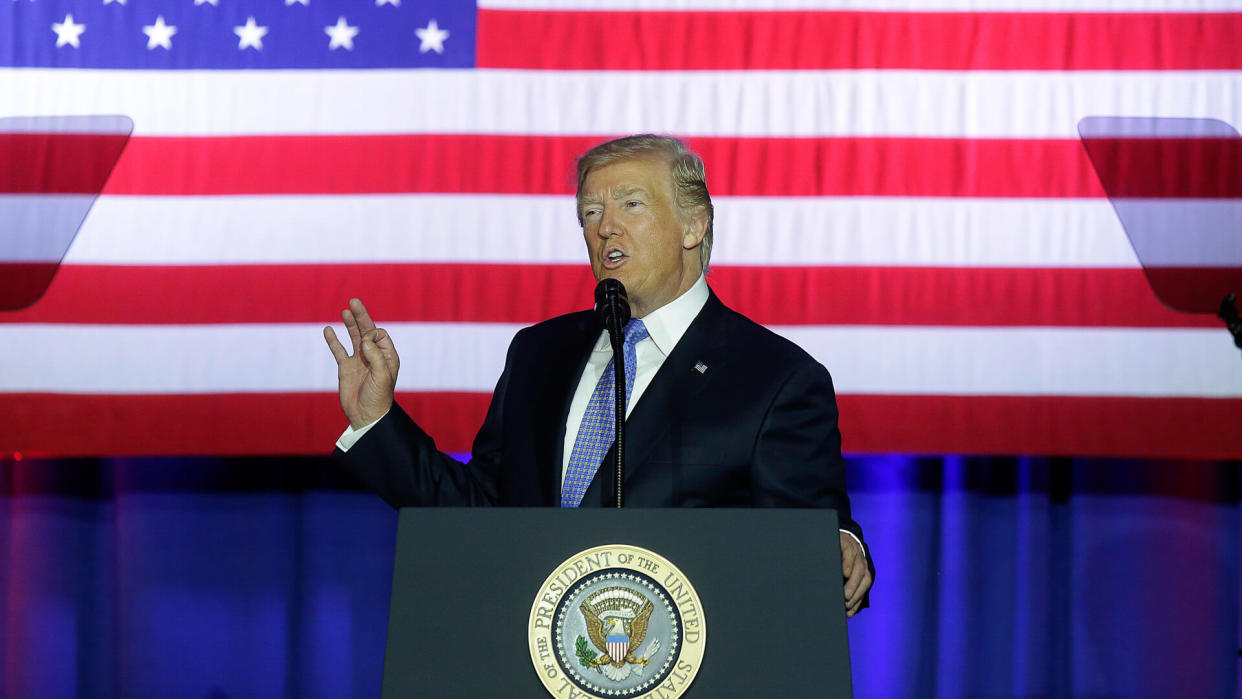<p>-
- States Where Workers Will See the Least Benefit From Trump's New Tax Law</p>
<p>Heather TaylorJuly 26, 2025 at 6:01 PM</p>
<p>Joshua Lott / Getty Images</p>
<p>Not all states will be better off under President Donald Trump's "One Big Beautiful Bill Act," even though it has been advertised as a win for American workers.</p>
<p>Find Out: How Paychecks Would Look in Each State If Trump Dropped Federal Income Tax</p>
<p>Check Out: How Middle-Class Earners Are Quietly Becoming Millionaires — and How You Can, Too</p>
<p>GOBankingRates spoke to two professionals to learn more about the states and regions that stand to be most negatively impacted by this tax and spending bill. Here's what positions these states to see the fewest benefits from Trump's sweeping legislation.</p>
<p>traveler1116 / Getty ImagesHigh-Poverty States</p>
<p>George Carrillo is the CEO of the Hispanic Construction Council and former director of social determinants of health for the State of Oregon. Carrillo has seen firsthand the way federal policies shape the lives of working families and told GOBankingRates this bill delivers the fewest benefits to workers and their families in high-poverty states.</p>
<p>Some examples of the nation's most vulnerable states include Mississippi, Alabama and Louisiana — where low-income Americans are already struggling to get by.</p>
<p>But the reason low-income workers stand to benefit least in these states is not because the states are considered "poor."</p>
<p>Patrice Williams-Lindo, CEO of Career Nomad and former workforce strategist with Deloitte and KPMG, said low-wage workers lack bargaining power and benefits that are often decoupled from job growth.</p>
<p>Read More: What Is the Estimated Median Income for the Upper-Middle Class in 2025?</p>
<p>Explore Next: Here's the Minimum Net Worth To Be Considered Upper Class in Your 50s</p>
<p>Trending Now: Suze Orman's Secret to a Wealthy Retirement--Have You Made This Money Move?</p>
<p>Joecho-16 / Getty Images/iStockphotoStates With Strong Clean Energy or Tech Sectors</p>
<p>The clean energy workforce will be heavily impacted in states like Washington and Oregon. According to Carrillo, the bill not only repeals tax credits for electric vehicles and renewable energy but it also threatens the stability of jobs in battery manufacturing, transit electrification and construction.</p>
<p>"Industry estimates point to as many as 100,000 job losses nationally," Carrillo said. "While these states have higher median incomes and more resources, workers in clean energy sectors will find themselves left out, especially compared to those in traditional fossil fuel industries. Many workers in these fields will see their opportunities shrink just as the industry has started to expand."</p>
<p>Trending Now: What Salary Single People Need To Live Comfortably in 100 Major US Cities</p>
<p>fizkes / Getty Images/iStockphotoStates With High Black and Brown Populations</p>
<p>Another at-risk group are high Black and brown populations in states where there are weak labor protections. According to World Population Review, more than 30% of the population is Black in Maryland, Georgia, Louisiana and Mississippi. Nearly 40% of the population in Texas and California is made up of the Hispanic community, which also accounts for nearly half of New Mexico's population.</p>
<p>Williams-Lindo said, "Any policy that fails to address wage disparities or the racial wealth gap will compound inequities, particularly in states where workers already face systemic barriers to advancement."</p>
<p>FatCamera / Getty ImagesStates Reliant on Federal Aid</p>
<p>A 2025 interactive map from The New York Times revealed where Medicaid enrollment is the highest across America. According to the map, more than 40% of residents in Eastern Kentucky rely on Medicaid. One-third of the population in Eastern Louisiana is enrolled in this program.</p>
<p>If the bill reallocates funds away from social programs in a state reliant on this federal aid, Williams-Lindo said the state will carry a double burden of low wages and reduced safety nets.</p>
<p>"Deep cuts to Medicaid and SNAP force the lowest-income households to pay more out of pocket, while state governments with limited budgets cannot fill the gaps," Carrillo said. "For a family living on $26,000 a year, losing $1,600 in annual support is significant."</p>
<p>skynesher / Getty ImagesWhy Poorer States Don't Immediately Benefit</p>
<p>Many Americans may be under the impression that poor states automatically benefit from legislation like the "Big Beautiful Bill." As Williams-Lindo explained to GOBankingRates, this bill could ultimately leave countless Americans behind.</p>
<p>"Benefits flow along policy design, industry incentives and who holds power locally to secure jobs," she said. "Without targeted wage support or clean energy transitions, these workers risk being left behind under big promises that don't translate into household-level impact."</p>
<p>More From GOBankingRates</p>
<p>I'm a Realtor: This Is Why No One Wants To See Your Home</p>
<p>3 Things Retirees Should Stop Buying To Save Money Amid Tariffs</p>
<p>How Middle-Class Earners Are Quietly Becoming Millionaires -- and How You Can, Too</p>
<p>7 Wealth-Building Shortcuts Proven To Add $1K to Your Wallet This Month</p>
<p>This article originally appeared on GOBankingRates.com: States Where Workers Will See the Least Benefit From Trump's New Tax Law</p>
<a href="https://ift.tt/Rxz7IDi" class="dirlink-1">Original Article on Source</a>
Source: "AOL AOL Money"
Source: AsherMag
Full Article on Source: Astro Blog
#LALifestyle #USCelebrities





